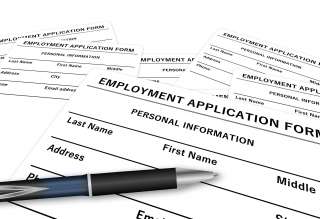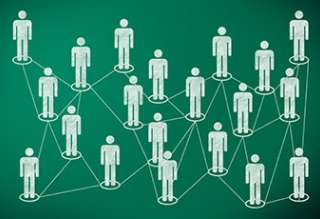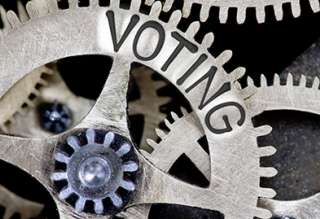- Our Story
- Publications & Resources
- Publications & Resources
- Publications
- IEEE Signal Processing Magazine
- IEEE Journal of Selected Topics in Signal Processing
- IEEE Signal Processing Letters
- IEEE Transactions on Computational Imaging
- IEEE Transactions on Image Processing
- IEEE Transactions on Information Forensics and Security
- IEEE Transactions on Multimedia
- IEEE Transactions on Signal and Information Processing over Networks
- IEEE Transactions on Signal Processing
- IEEE TCI
- IEEE TSIPN
- Data & Challenges
- Submit Manuscript
- Guidelines
- Information for Authors
- Special Issue Deadlines
- Overview Articles
- Top Accessed Articles
- SPS Newsletter
- SigPort
- SPS Resource Center
- Publications FAQ
- Blog
- News
- Dataset Papers
- Conferences & Events
- Community & Involvement
- Professional Development
- For Volunteers
- Information for Authors-OJSP
-
Home
Conferences Events IEEE Signal Processing Magazine IEEE SPL Article IEEE TIFS Article IEEE TMM Article IEEE TSP Article Jobs in Signal Processing Lectures Machine Learning Seasonal Schools Signal Processing News SPM Article SPS Distinguished Lectures SPS Newsletter Article SPS Webinar SPS Webinars SPS Webinar Series Webinar webinars
-
Our Story
What is Signal Processing?

The technology we use, and even rely on, in our everyday lives –computers, radios, video, cell phones – is enabled by signal processing. Learn More » -
Publications & Resources
-
SPS Resources
- Signal Processing Magazine The premier publication of the society.
- SPS Newsletter Monthly updates in Signal Processing
- SPS Resource Center Online library of tutorials, lectures, and presentations.
- SigPort Online repository for reports, papers, and more.
- SPS Feed The latest news, events, and more from the world of Signal Processing.
-
SPS Resources
-
Conferences & Events
-
Community & Involvement
-
Membership
- Join SPS The IEEE Signal Processing Magazine, Conference, Discounts, Awards, Collaborations, and more!
- Chapter Locator Find your local chapter and connect with fellow industry professionals, academics and students
- Women in Signal Processing Networking and engagement opportunities for women across signal processing disciplines
- Students Scholarships, conference discounts, travel grants, SP Cup, VIP Cup, 5-MICC
- Young Professionals Career development opportunities, networking
- Get Involved
-
Technical Committees
- Applied Signal Processing Systems
- Audio and Acoustic Signal Processing
- Bio Imaging and Signal Processing
- Computational Imaging
- Image Video and Multidimensional Signal Processing
- Information Forensics and Security
- Machine Learning for Signal Processing
- Multimedia Signal Processing
- Sensor Array and Multichannel
- Signal Processing for Communication and Networking
- Signal Processing Theory and Methods
- Speech and Language Processing
- Technical Working Groups
- More TC Resources
-
Membership
-
Professional Development
-
Professional Development
- Signal Processing Mentorship Academy (SigMA) Program
- Micro Mentoring Experience Program (MiME)
- Distinguished Lecturer Program
- Distinguished Lecturers
- Distinguished Lecturer Nominations
- Past Lecturers
- Distinguished Industry Speaker Program
- Distinguished Industry Speakers
- Distinguished Industry Speaker Nominations
- Industry Resources
- IEEE Training Materials
- Jobs in Signal Processing: IEEE Job Site
-
Career Resources
- SPS Education Program Educational content in signal processing and related fields.
- Distinguished Lecturer Program Chapters have access to educators and authors in the fields of Signal Processing
- Job Opportunities Signal Processing and Technical Committee specific job opportunities
- Job Submission Form Employers may submit opportunities in the area of Signal Processing.
-
Professional Development
-
For Volunteers
-
For Board & Committee Members
- Board Agenda/Minutes* Agendas, minutes and supporting documentation for Board and Committee Members
- SPS Directory* Directory of volunteers, society and division directory for Board and Committee Members.
- Membership Development Reports* Insight into the Society’s month-over-month and year-over-year growths and declines for Board and Committee Members
-
For Board & Committee Members
Popular Pages
Today's:
- Information for Authors
- (ICME 2026) 2026 IEEE International Conference on Multimedia and Expo
- IEEE Transactions on Information Forensics and Security
- (ICASSP 2026) 2026 IEEE International Conference on Acoustics, Speech, and Signal Processing
- Submit Your Papers for ICASSP 2026!
- Call for Papers for ICASSP 2026 Now Open!
- IEEE Transactions on Multimedia
- Membership
- (ASRU 2025) 2025 IEEE Automatic Speech Recognition and Understanding Workshop
- Video & Image Processing Cup
- IEEE Transactions on Image Processing
- Unified EDICS
- Submit a Manuscript
- Information for Authors OJSP
- IEEE Transactions on Signal Processing
All time:
- Information for Authors
- Submit a Manuscript
- IEEE Transactions on Image Processing
- IEEE Transactions on Information Forensics and Security
- IEEE Transactions on Multimedia
- IEEE Transactions on Audio, Speech and Language Processing
- IEEE Signal Processing Letters
- IEEE Transactions on Signal Processing
- Conferences & Events
- IEEE Journal of Selected Topics in Signal Processing
- Information for Authors-SPL
- Conference Call for Papers
- Signal Processing 101
- IEEE Signal Processing Magazine
- Guidelines
Last viewed:
- (ICASSP 2026) 2026 IEEE International Conference on Acoustics, Speech, and Signal Processing
- IEEE Transactions on Signal and Information Processing over Networks
- Information for Authors
- Publications Board
- Topic-Oriented Image Captioning Based on Order-Embedding
- Board of Governors
- Membership Board
- 2029 IEEE International Conferences on Acoustics, Speech, and Signal Processing (ICASSP 2029)
- SoundCloud’s ‘The Upload’ uses machine learning to help you find new tracks
- Submit Your Papers for ICASSP 2026!
- SAM TC Home
- (ICSM 2025) 2025 International Conference on Smart Multimedia
- Call for Papers for ICASSP 2026 Now Open!
- Unified EDICS
- Guidelines
Top Reasons to Join SPS Today!
1. IEEE Signal Processing Magazine
2. Signal Processing Digital Library*
3. Inside Signal Processing Newsletter
4. SPS Resource Center
5. Career advancement & recognition
6. Discounts on conferences and publications
7. Professional networking
8. Communities for students, young professionals, and women
9. Volunteer opportunities
10. Coming soon! PDH/CEU credits
Click here to learn more.
The Latest News, Articles, and Events in Signal Processing

The Signal Processing and Speech Communication Laboratory (www.spsc.tugraz.at) at Graz University of Technology seeks a Senior Scientist who will further develop our research program in Audio Signal Processing with responsibilities in research goal definition, proposal writing and funding acquisitiion, scientific and administrative project management, research team management, research infrastructure s

Post-Doctoral Position in Machine Learning for Human Machine Trust in Teaming
Compensation: 85K per year + Benefits
Contact for interview (include most recent CV + 3 references contact information) and further information
Shuchin Aeron shuchin@ece.tufts.edu,
Matthias Scheutz Matthias.Scheutz@tufts.edu

Post-Doctoral Position in Machine Learning for Human Machine Trust in Teaming
Compensation: 85K per year + Benefits
Contact for interview (include most recent CV + 3 references contact information) and further information
Shuchin Aeron shuchin@ece.tufts.edu,
Matthias Scheutz Matthias.Scheutz@tufts.edu
The IEEE Signal Processing Society (SPS) would like to express our concern and support for the members of our global community and all affected by the current COVID-19 pandemic.
The IEEE Board of Directors has approved the 2021 IEEE Technical Field Awards. The complete list of recipients and their citations is online at www.ieee.org/awards. Please feel free to send your notes of congratulations and to publicize the recipients within your IEEE and professional affiliations.
IEEE SPS has built a streamlined mechanism for employers to add a job announcement by simply filling in a simple job opportunity submission Web form related to a particular TC field. To submit job announcements for a particular Technical Committee, the submission form can be found by visiting the page below and selecting a particular TC.
Please visit the Conferences and Events page on the IEEE Signal Processing Society website for Upcoming Lectures by Distinguished Lecturers.
As a reminder for continuing chapter chairs and for incoming chapter chairs for 2020, we would like to highlight a valuable resource available to you. Launched in 2018, IEEE OU Analytics, is a web-based business intelligence tool which delivers essential metrics on memberships or subscriptions to OUs, including Societies, Councils, Technical Communities, etc.
The Signal Processing Society (SPS) has 13 Technical Committees that support a broad selection of signal processing-related activities defined by the scope of the Society.
In an effort to continue our programs and services during this difficult time, the SPS Awards Board is now accepting nominations for all Society level awards, from paper awards to the major society awards. Nominations are due by 1 September 2020.
It is my pleasure to announce that the IEEE Signal Processing Society (SPS) annual election will commence on 17 August! This year, all eligible SPS Members will now vote for the Regional Directors-at-Large for Regions 1-6 and 8 (term 1 January 2021 through 31 December 2022), and Members-at-Large (term 1 January 2021 through 31 December 2023) of the IEEE Signal Processing Society Board of Governors (BoG).
Your event was a success, you had great feedback from attendees, and you made lasting impacts on your community. Now that your event is over, you may be wondering how to keep attendees engaged and looking forward to your next event.
A process is in place to ensure that Section, Chapter and Society officers will be notified when a wire transfer is processed through a local Section bank account for a chapter that does not have its own bank account.
Nita Patel is a Senior Director, Engineering at L3Harris Technologies. L3Harris is an agile, global aerospace and defense technology innovator, delivering end-to-end solutions that meet customers' mission-critical needs.
This issue brings to you our interview with Dr. Thướng Nguyễn Cảnh an active IEEE Signal Processing Society (SPS) Young Professional. We approached Dr. Cảnh with a few questions.
August 2020 is here. None of us really could imagine that we will be still working around COVID19 issues, but we are, and it’s a new normal. Many American universities are preparing for the fall semester, and it will be a hybrid semester at American schools, meaning, some in-person classes with most classes being online due to health and safety concerns. A similar situation is expected around the globe.
The SPS Fellow Evaluation Committee is seeking nominations for four new members of the 2021 Fellow Evaluation Committee. The term of appointment is one year, renewable for up to three consecutive years (1 January 2021-31 December 2021). The position is responsible for evaluating nominations for IEEE Fellow that are referred for review by the IEEE Fellow Committee and providing IEEE Judges with a critical evaluation and assessment of nominees referred to the Society by the nominator.
The IEEE annual election begins on 17 August and end on 1 October. All ballots must be received by 12:00 p.m. EDT USA/16:00 UTC. The IEEE Signal Processing Society is committed to ensuring that its members are prepared with sufficient information about the candidates in order to make their best informed decision.

Vertex Postdoctoral Researcher, University of Southern California
Principal Investigator: Urbashi Mitra, Electrical & Computer Engineering and Computer Science
Pages
SPS Social Media
- IEEE SPS Facebook Page https://www.facebook.com/ieeeSPS
- IEEE SPS X Page https://x.com/IEEEsps
- IEEE SPS Instagram Page https://www.instagram.com/ieeesps/?hl=en
- IEEE SPS LinkedIn Page https://www.linkedin.com/company/ieeesps/
- IEEE SPS YouTube Channel https://www.youtube.com/ieeeSPS
Home | Sitemap | Contact | Accessibility | Nondiscrimination Policy | IEEE Ethics Reporting | IEEE Privacy Policy | Terms | Feedback
© Copyright 2025 IEEE - All rights reserved. Use of this website signifies your agreement to the IEEE Terms and Conditions.
A public charity, IEEE is the world's largest technical professional organization dedicated to advancing technology for the benefit of humanity.





















